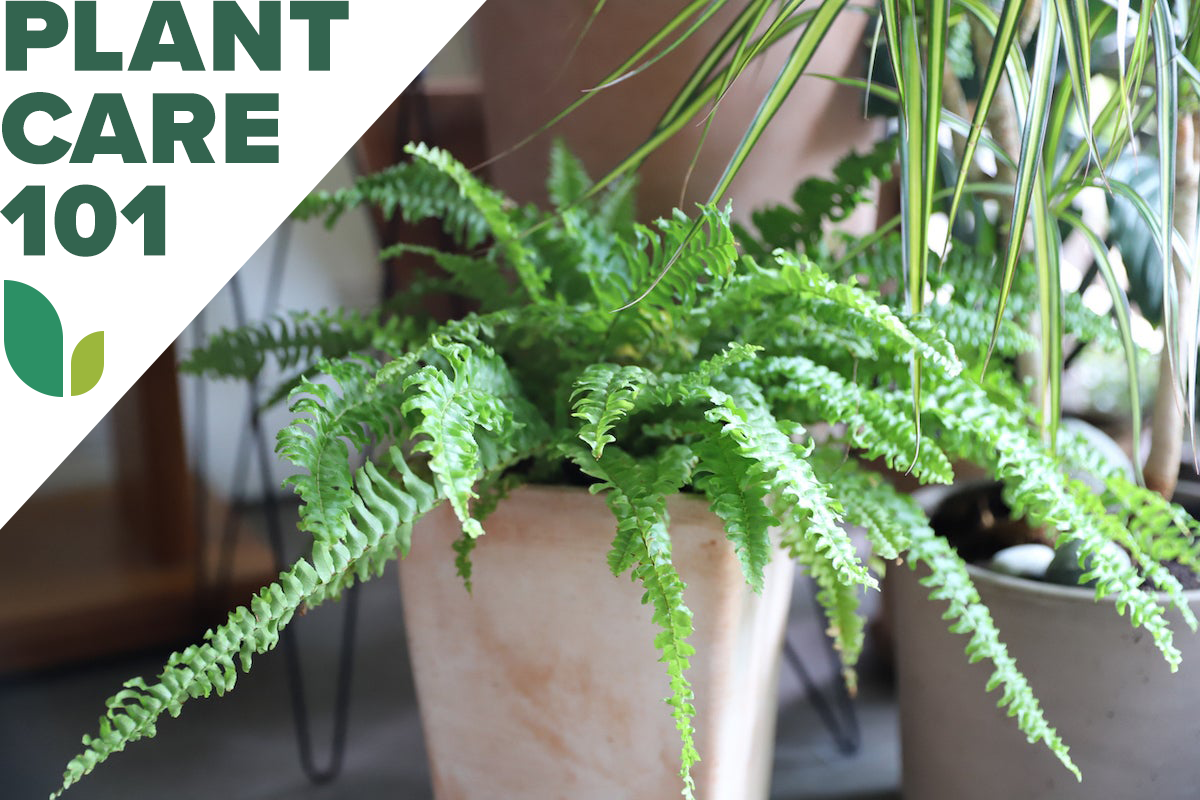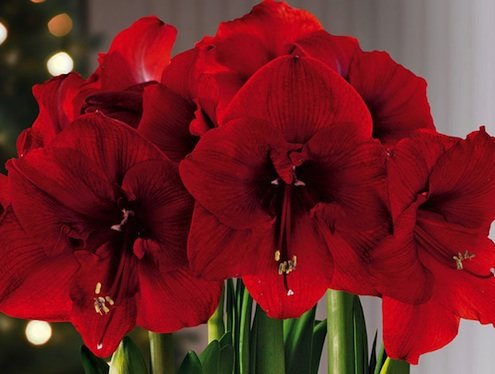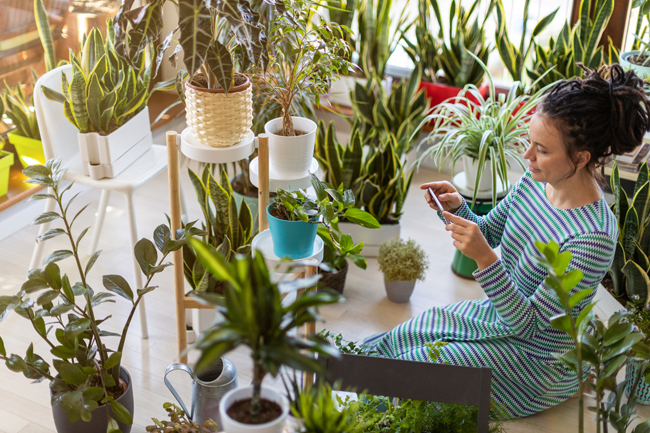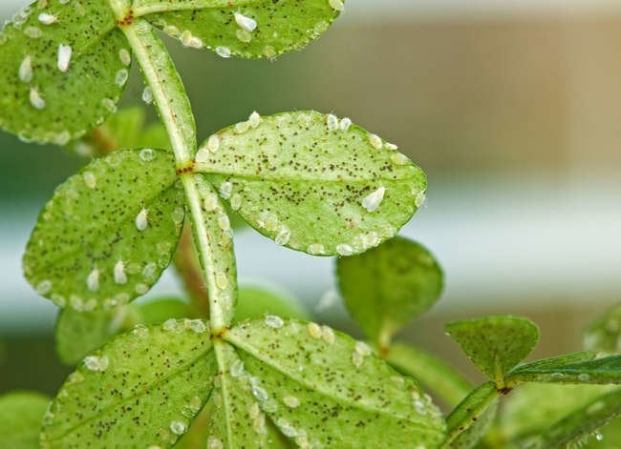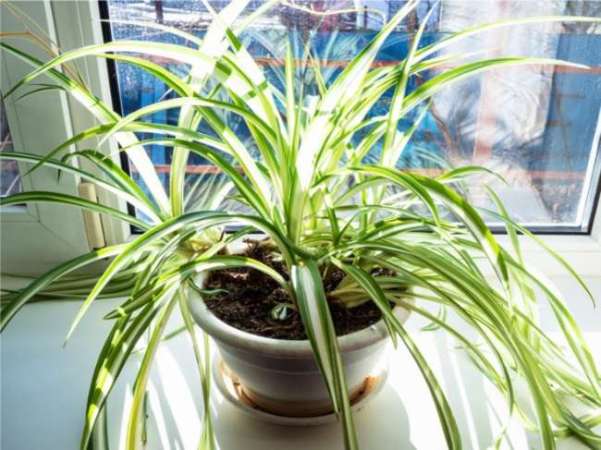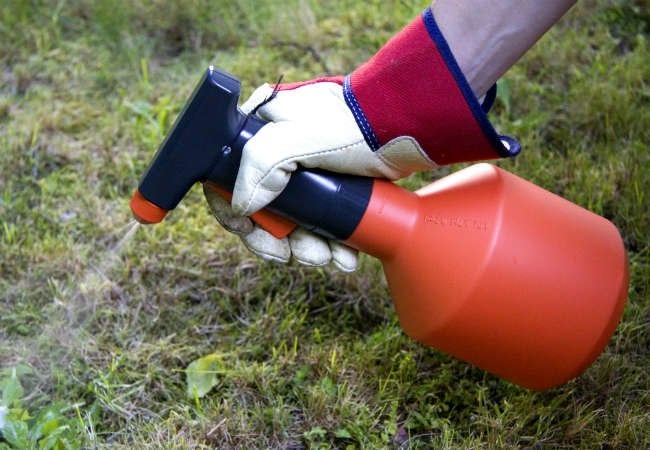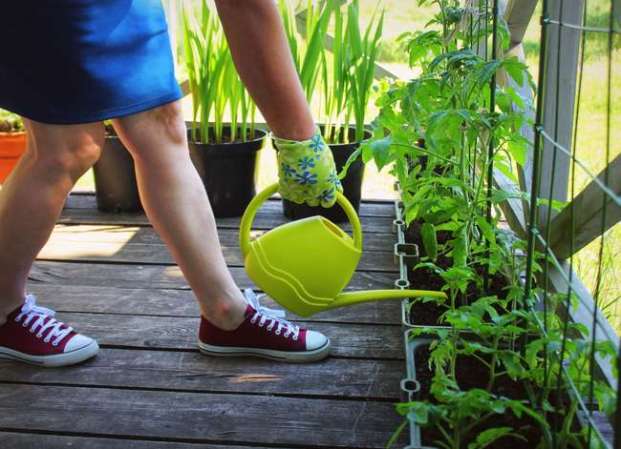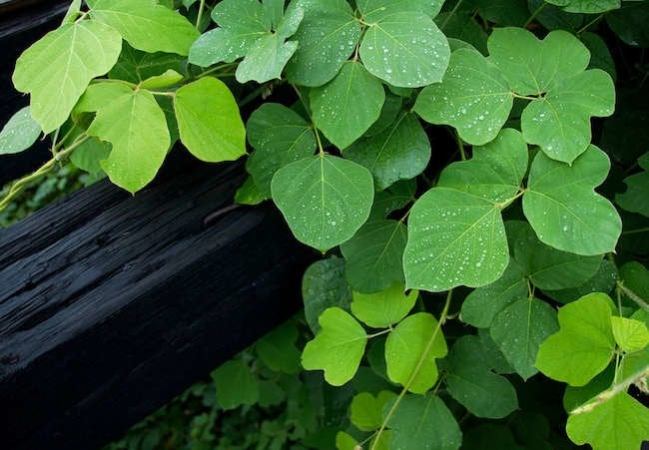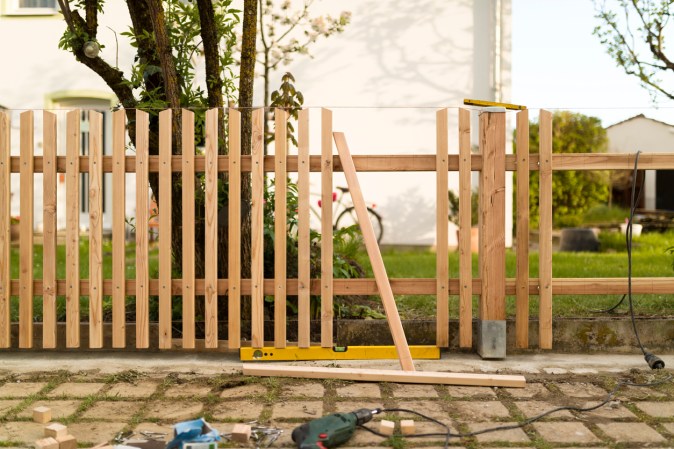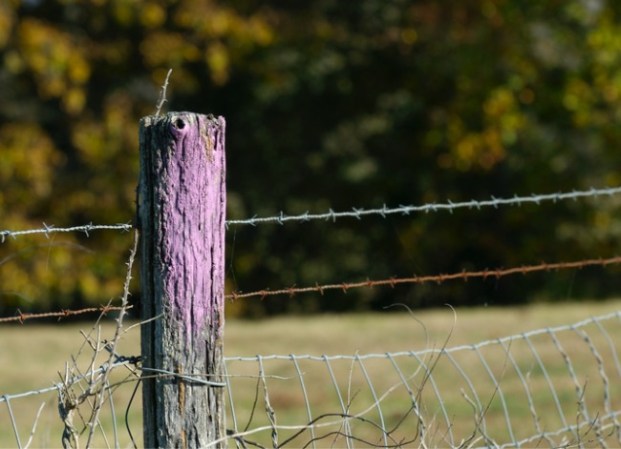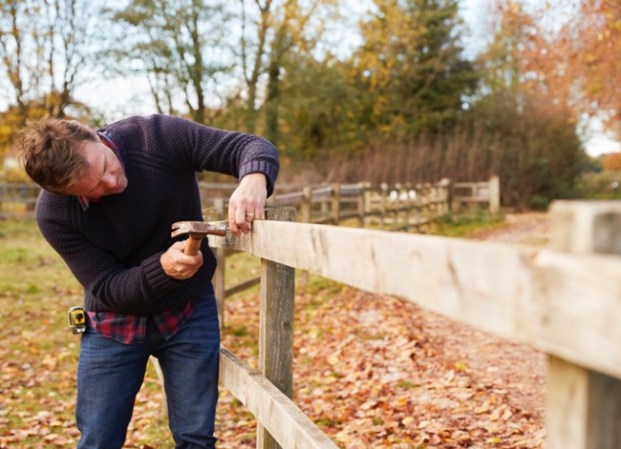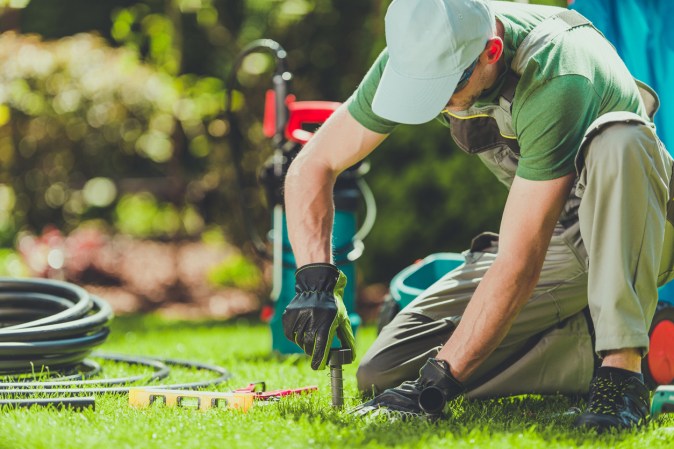We may earn revenue from the products available on this page and participate in affiliate programs. Learn More ›
Back in 1894, a Cambridge, Massachusetts florist noticed that one of the couple hundred sword ferns he’d received in a recent shipment had larger fronds with more arching growth than was typical with sword ferns. His discovery, Nephrolepis exaltata ‘Bostoniensis,’ came to be known as the Boston fern and would spawn many cultivars.
Hardy only in USDA zones 10 through 12, the plant generally grows in containers elsewhere. Boston fern care outdoors is easy, as proved by the luxuriant specimens suspended under porch roofs in hanging baskets every summer. However, Boston fern care indoors—in low-humidity air-conditioned or heated homes—can prove challenging.
Related: 12 Plants You Can Grow Successfully in the Shower
Boston Fern Care at a Glance
Common Name: Boston fern, sword fern
Scientific Name: Nephrolepis exaltata ‘Bostoniensis’ and cultivars
Soil: Quick-draining, pH 5 to 5.5
Light: Bright, indirect light, morning sun
Water: Constant light moisture
Food: Balanced houseplant food
Temperature and Humidity: 60 to 95 degrees Fahrenheit, humid
Propagation: By division
Safety: Nontoxic
Boston Fern Characteristics
Despite its associations with New England, the Boston fern originated from a tropical plant, Nephrolepis exaltata, which is native to Florida, Mexico, and parts of Central and South America. In those habitats, the Boston type can grow to 7 feet tall, but probably won’t surpass a height of 3 feet in a container.
The plant’s sword-shaped fronds bend as they mature and can reach 3 to 4 feet long under optimum conditions. Care for Boston fern will require that you care enough about yours to make extra efforts to keep it happy over the winter. Otherwise, it might be best to treat it as an annual.
Types of Boston Fern
Fern lovers have plenty of choices to add trailing green elements to their home or office space. Among the most popular types of Boston fern are:
- Compacta: Topping out at 18 inches, this plant works for those who prefer a smaller version of the Boston fern.
- Fluffy Ruffles: The fluffy look of this 1-foot plant derives from its ruffly foliage.
- Tiger Fern: This colorful “cat” grows to 2 feet, and its green foliage has yellow stripes.
Selecting Soil for Boston Fern
Indoors or out, the Boston fern prefers a light, fast-draining soil with an acidic pH between 5 and 5.5. A combination of one part standard potting mix combined with one part peat moss works well, as does a mix of two parts peat moss combined with one part each of perlite and vermiculite.
Since Boston fern plant care requires humidity, you might want to double-pot your plant. To do so, place it in a shallow terra cotta pot with drainage holes which is no more than 1 inch larger than the root ball on all sides. You then can set that pot inside a slightly larger one lined with damp sphagnum moss. Water evaporating from that moss will help raise the humidity levels around the plant.
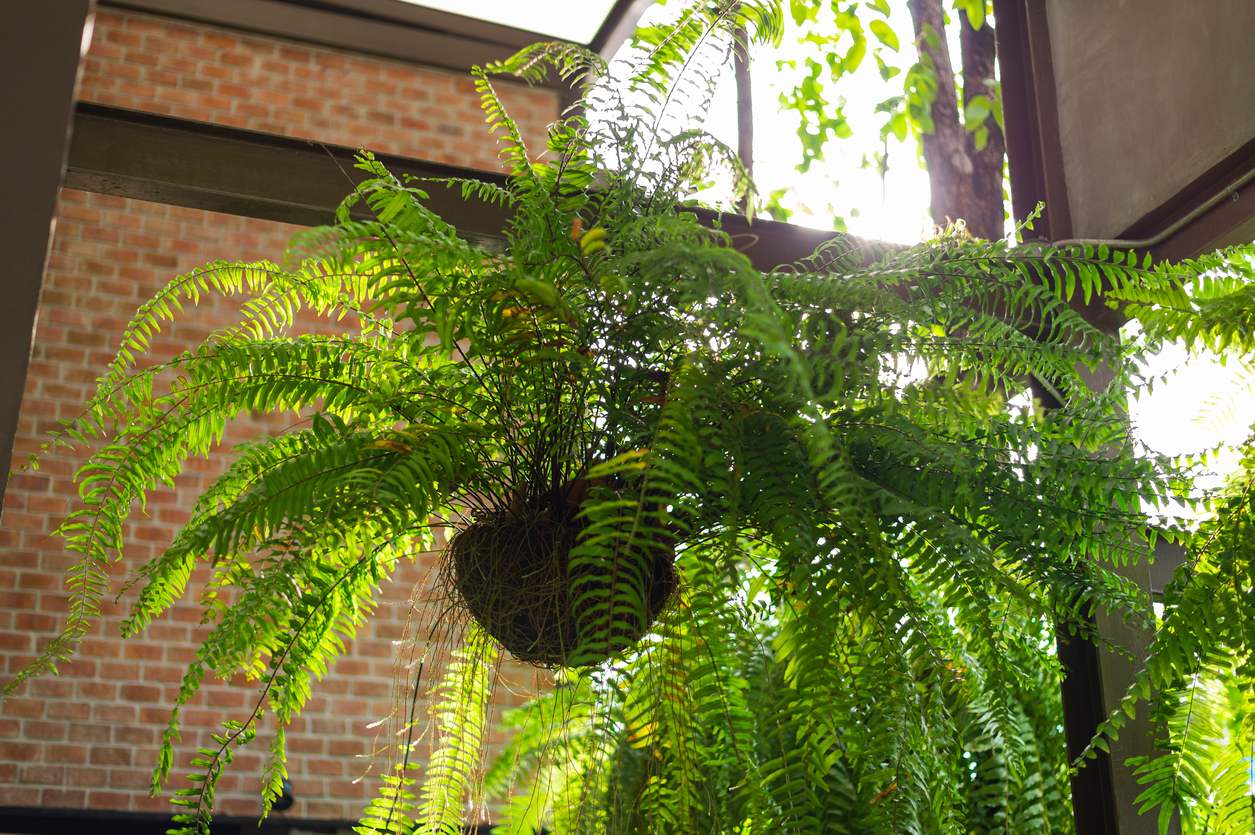
The Right Light
For Boston fern indoor care, place your plant where it will receive bright light but no midday or afternoon sun. Morning sun from an east window usually is mild enough to suit the plant, or you can place a sheer curtain between a south or west-facing window and the plant.
For Boston fern care outside, keep a potted specimen in bright shade beneath a porch roof or on the eastern side of a building that blocks any later-than-morning sun. In-ground plants do well beneath high-growing trees that diffuse or dapple midday or afternoon rays without casting heavy shadow.
Watering Boston Fern Plants
Keep your fern’s soil lightly moist at all times, but never soggy. (That means the soil should feel like a wrung-out sponge rather than one still soppy with water.) Never allow the root ball to dry out completely or the plant may die. That sometimes can require watering a hanging basket fern twice per day during the heat of summer.
If the foliage browns due to under-watering, don’t throw the plant out. Instead, water it well, cut it back to 2 inches or so in height, and wait to see whether the fern will forgive you, leaf out, and have fronds again.
Related: These 11 Plants May Help Keep Your House Cool

Fertilizing Boston Fern
Care of Boston fern also requires regular feeding in spring and summer. You can fertilize your plant every two weeks with a balanced plant food such as 20-20-20 used at half strength. For example, if the label calls for 1/2 teaspoon per gallon of water for houseplants, cut that amount to 1/4 teaspoon per gallon instead. Once growth slows in autumn, avoid feeding your plant until spring.
Outdoor care of Boston fern differs in zones where it is perennial, since ferns growing in fertile ground generally don’t require feeding. However, you may want to add a 1/2-inch layer of compost beneath their mulch.
Setting the Temperature and Humidity
As a tropical plant, this fern tolerates temperatures between 65 and 95 degrees Fahrenheit during summer. Once outdoor temperatures drop into the low 40s in autumn, bring the plant indoors, preferably to a bright and humid location such as a bathroom. For Boston fern winter care, in addition to watering the plant as needed, mist it daily in the early morning. Use bottled spring or distilled water if your tap water is hard.
If you don’t have room to display your fern indoors and merely want it to remain semi-dormant but alive until spring, you can place it in a bright location in a seldom used room, setting the thermostat in that room to between 50 and 55 degrees Fahrenheit. That should keep the humidity higher and the necessity for frequent watering lower. However, some cultivars, such as ‘Dallas’ and ‘Kimberly Queen,’ tolerate low humidity better than the original Boston fern does.
Propagating Boston Fern
Although Boston ferns make spores on the undersides of their fronds, as most ferns do, some cultivars are sterile and others don’t come true from spores. Fortunately, the plants reproduce on their own via runners called stolons, which root themselves wherever they touch the soil.
Therefore, each fern gradually expands outwards, and the best way to propagate it is to divide it in spring. Simply remove a well-watered plant from its pot and cut vertically through the root ball to divide it into the number of new plants you want—giving each its own pot and taking care that none dry out while recovering.
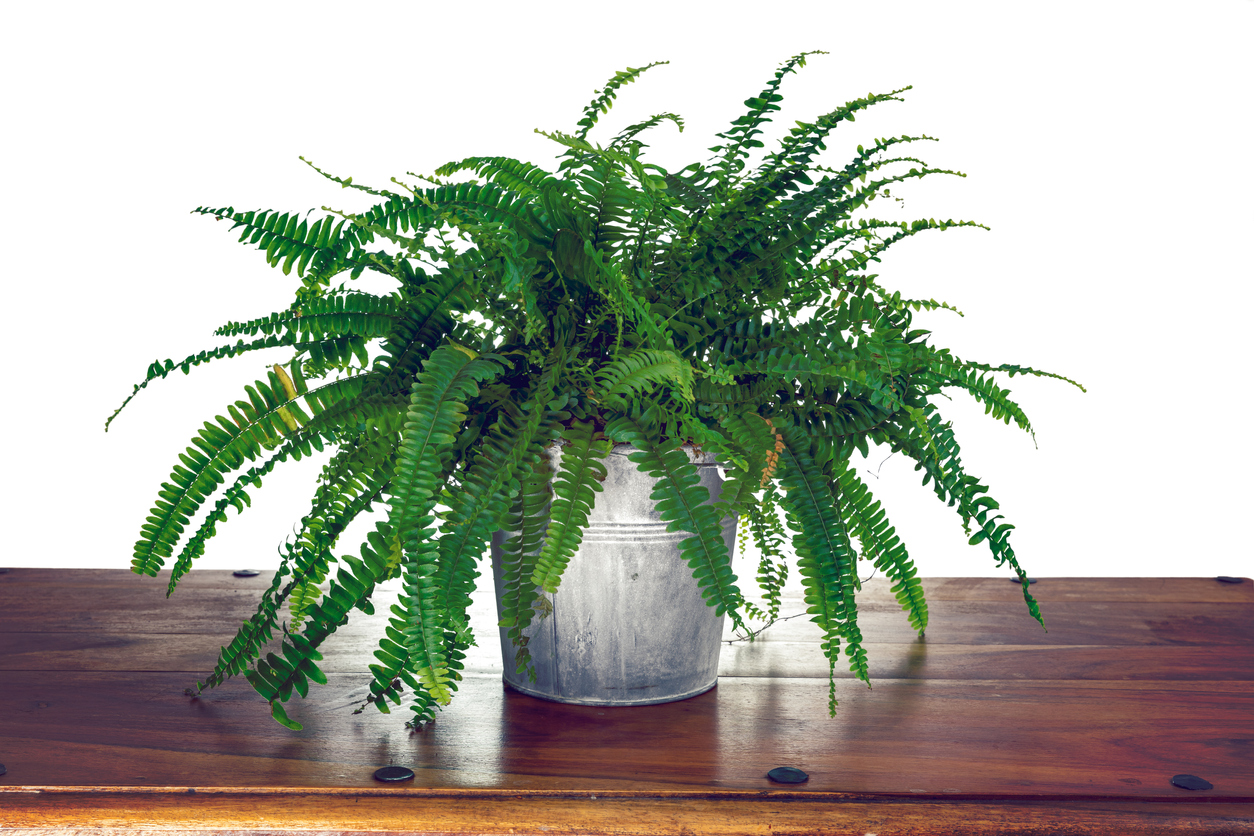
Safety Considerations
Boston ferns are nontoxic, and are safe for both children and pets. However, because these plants can be heavy and often are strung up overhead, hanging Boston fern care should include making sure that their baskets are well secured with heavy-duty hooks screwed into joists. And check to make sure that toddler hands or pet paws can’t pull down pedestal ferns or tip their stands over.
Ferns often will shed foliage and/or spores when brought indoors for the winter, so it’s best to place them in an area with easy-to-sweep and scrub floors. Positioning them above your new easily stained white carpet is probably just asking for trouble.
Potential Pests and Diseases
Appearance of yellow fronds on ferns often indicate over-watering, while wilting ones indicate under-watering. Brown tips and edges point to low humidity or over-fertilization. If your plant looks pale and thready—as in showing wisps of webbing—it might be under attack from spider mites. Snip off the most affected fronds and give your fern a shower twice a week to wash off the remaining mites until the problem seems to resolve.
Keep in mind that you should avoid insecticides if at all possible, since they often will damage fern foliage. The safest way of getting rid of insects is usually to simply remove the affected fronds.
Related: Everywhere Ferns: Choosing the Right Variety for Your Garden
FAQs About Boston Fern Care
If you still have quick questions about caring for this tropical houseplant, check out the list below for some quick answers.
Q: How much sunlight does a Boston fern need?
The plant prospers in bright, indirect light or with only morning sun, but shouldn’t be exposed to the midday or afternoon sort.
Q: Do Boston ferns clean the air?
Yes. According to NASA scientist Bill Wolverton, the Boston fern “is one of the most effective plants for removing airborne pollutants.”
Q: Do Boston ferns smell?
Most have only a faint woodsy scent unless they have been overwatered, in which case they can smell musty.
Q: How big can Boston ferns grow?
Potted ferns can grow to 3 feet tall, in-ground ones to 7 feet.
Looking for more challenging houseplants to flex your green thumb? Check out our guides on caring for calathea, fiddle leaf fig, and prayer plant

